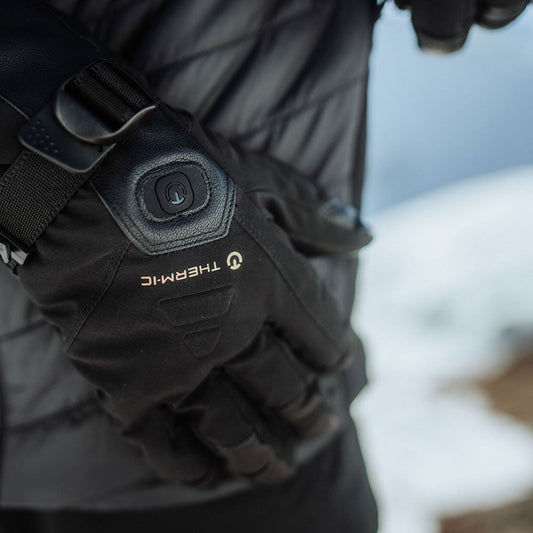By François Montuori.
Contrary to what many people think, paragliding is not just about flying down mountains. Thanks to a phenomenon well known to large birds of prey and migratory birds, you can gain altitude and cover many kilometres in the air in the course of a single day, without ever having to land. This phenomenon is known as thermals: updrafts of warm air heated by the sun on the ground, which can rise several thousand metres above the ground.
This creates a column of air that rises like a vertical jet of water. By turning within it, birds, paragliders and other gliders can easily gain altitude. These updrafts are possible because the air cools as you climb in altitude. Warmer air is less dense than cold air, so it naturally tends to rise. In general, when paragliding, the temperature cools by 7 to 10°C for every 1000m of altitude difference.
In spring, it is therefore not unusual to have close to 20°C in the valley and a negative temperature in flight. On the coldest days, it can even drop below -15°C, making paragliding very difficult or even impossible for some pilots.
The problem of hand insulation in flight
In addition to this cold, there are the specific characteristics of paragliding. This is where the concept of perceived temperature comes into play. With the wind, the air's ability to cool us increases (those who have never blown on their soup can speak or remain silent forever!).
A paraglider flies at between 30 and 60 km/h, which gives us a perceived temperature that is on average 5°C lower than the actual temperature. The effect of the cold on the hands is further amplified by the upward position of the hands used to steer the glider, as well as by the pressure of the controls on the hands, which prevents good blood circulation. Even if this last parameter is difficult to measure, we know that it greatly contributes to the difficulty of protecting the hands from the cold in flight.
Many paragliders see the cold as an insurmountable obstacle for their hands in winter, and therefore rarely fly in winter. After all, what's the point of flying if it's not for pleasure? However, there are some very effective solutions and tips that allow you to fly in the warmth for a long time, even in the coldest conditions.
Solutions and tips
Many pilots use sleeves, a kind of hand sleeping bag that fits over the controls. This is not a very practical solution: it is difficult to manage on take-off, the loss of dexterity can be almost dangerous and in a world where rear-seat flying is becoming more and more accessible, the solution is becoming even less attractive.
Heated gloves appear to be the miracle solution for dealing with the cold in the air, guaranteeing warmth and dexterity. But is this really the case? Which gloves should you choose for flying?
There are many models on the market, with different levels of power, battery life and insulation. It is important to choose a glove that is warm even when switched off, that cuts the wind well and has a high heating power. A glove without a membrane will be less effective. Many gloves available on the market at an entry-level price will not have enough autonomy and not enough heating power. Not to mention the lifespan of the batteries.
After two winter seasons using the Therm-IC Ultra Heat Boost, this model is for me the best solution available to paragliders to date. There are three heat settings available, impressive power and a long battery life. With the pack of additional batteries, you have 5200mAh of battery power per glove, which allows you to fly for up to 4 hours at full power, and believe me, when you need full power, you certainly won't be flying for more than 4 hours.





